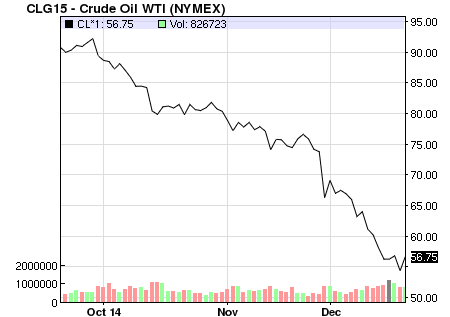MarketMuse update courtesy of Tom Lydon from ETF Trends. This update acts as a follow up from one of yesterday’s posts.
Thursday’s biggest financial market headlines came courtesy of the Swiss National Bank (SNB), which opted to drop the franc’s peg to the euro, a move that sent the Swiss currency soaring and Swiss stocks to one of their worst one-day performances on record.
The CurrencyShares Swiss Franc Trust (NYSEArca: FXF) easily Thursday’s top performing non-leveraged ETF with a gain of over 17% on volume that was nearly 34 times trailing three-month daily average. SNB’s decision to do away with the franc’s euro peg was a surprise, particularly because it conflicted with recent rhetoric from the central bank, which indicated SNB was looking to defend the EUR/CHF peg.
Forex traders and ETF investors alike were caught off-guard.
“Data from the Commodity Futures Trading Commission released on Friday showed net short positions of 24,171 contracts on the Swiss franc, the largest since June 2013. Adding in 662 short option contracts gives a combined position of 24,833 contracts or $3.5 billion at the current rate of around 0.90 franc to the dollar,” according to Reuters.
Regarding ETFs, the iShares MSCI Switzerland Capped ETF (NYSEArca: EWL), the largest U.S.-listed Switzerland ETF, lost almost $27 million in assets since the start of 2015 heading into Thursday while FXF was light by almost $5 million. The First Trust Switzerland AlphaDEX Fund (NYSEArca: FSZ), a smart beta spin on Switzerland ETFs, had not lost or taken in any money since the start of the new year.
Those numbers are not staggering, but fourth-quarter outflows from Switzerland ETF paint a better picture of investors missing out on Thursday’s Swissie surge. In the last three months of 2014, investors pulled nearly $198 million from EWL and $113.5 million from FSZ.
With gold prices languishing and the dollar surging, investors also did not stick around to wait for a franc rally and pulled almost $10 million from FXF. Of course it is with the benefit of hindsight and few if any traders could see a 17% one-day move coming for a currency ETF, but investors that left equity-based Switzerland ETFs missed out on EWL surging nearly 4% and FSZ climbing 3.7% Thursday.
Some former gold ETF investors also missed. The SPDR Gold Shares (NYSEArca:GLD) lost $3.2 billion in assets last year and has bled another $115 million to start 2015, but a sustained rally by the franc could ameliorate that situation.
On Thursday, GLD, the world’s largest gold ETF, climbed 2.5% on more than double the average daily volume to reclaim its 200-day moving average for the first time since September.
For the original article from ETF Trends, click here.





